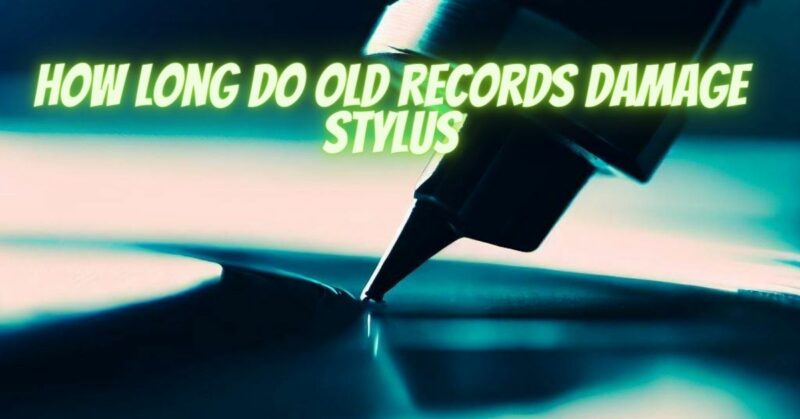Vinyl records have a nostalgic charm and offer a unique listening experience, but they can raise concerns about stylus wear, especially when playing old or well-loved records. One common question is how long old records can damage a stylus and what measures can be taken to minimize potential harm. In this article, we will explore the relationship between old records and stylus wear and provide insights into preserving both your stylus and your cherished vinyl collection.
The Stylus’s Journey
To understand the impact of old records on a stylus, let’s first examine the stylus’s journey:
- Stylus (Needle): The stylus is the fine, pointed tip that makes direct contact with the grooves on your records. It’s responsible for translating the physical grooves into electrical signals, which produce sound.
- Record Grooves: Vinyl records consist of grooves that carry the recorded music. Over time, these grooves can accumulate dust, dirt, and wear.
Factors Affecting Stylus Wear
Several factors play a significant role in determining how long old records may affect a stylus:
- Record Condition: The condition of your old records is a critical factor. Records with excessive wear, deep scratches, or groove damage can accelerate stylus wear.
- Dust and Debris: Dust and microscopic debris on the record surface can be abrasive and may lead to stylus wear and damage.
- Tracking Force: The tracking force, which is the pressure applied by the stylus to the record grooves, is crucial. Excessive tracking force can lead to faster stylus wear.
- Stylus Material and Quality: The material and quality of the stylus tip play a role in its durability. High-quality materials like diamonds or sapphires tend to last longer.
- Alignment and Setup: Proper alignment and setup of your turntable’s tonearm and cartridge are essential. Misalignment can cause uneven wear and damage.
- Record Cleanliness: Regularly cleaning your records can remove abrasive particles and debris, reducing the likelihood of stylus damage.
How Long Do Old Records Damage a Stylus?
The potential for old records to damage a stylus largely depends on the condition of the records and how well they have been maintained. Here are some considerations:
- Well-Preserved Records: Old records that have been stored in good conditions, cleaned before playback, and are free from deep scratches are less likely to cause significant stylus wear. In such cases, the stylus may experience minimal wear over time.
- Poorly Maintained Records: Records that have not been properly cleaned or have visible imperfections such as deep scratches, dirt, or debris may pose a higher risk to the stylus. Playing such records can accelerate stylus wear and potentially damage it.
- Regular Maintenance: Regularly cleaning your records and ensuring proper turntable setup can minimize the impact of old records on the stylus. Proper alignment, tracking force, and stylus care can also contribute to prolonging stylus life.
- Replacement When Needed: When your stylus shows signs of wear or damage, it’s essential to replace it with a compatible, high-quality replacement to prevent further damage to your records and maintain sound quality.
While old records can potentially contribute to stylus wear over time, the extent of damage depends largely on the condition of the records and the care taken in playback. Well-preserved records that are regularly cleaned and free from significant imperfections are less likely to cause rapid stylus wear. To enjoy your vintage vinyl collection without undue concern, ensure proper turntable setup, regular stylus inspection, and prompt replacement when necessary. By taking these precautions, you can enjoy your cherished records while safeguarding your turntable’s stylus.


